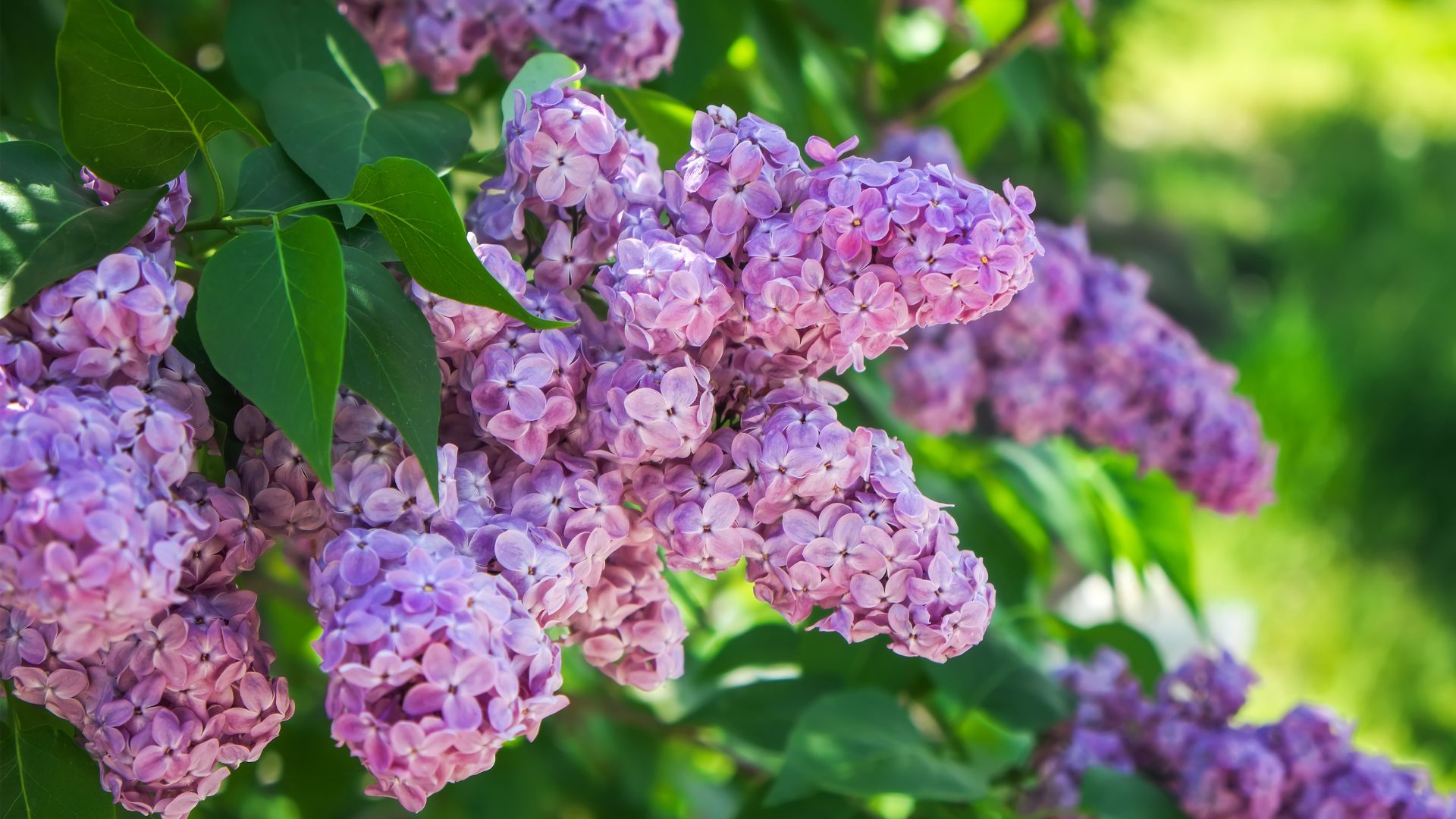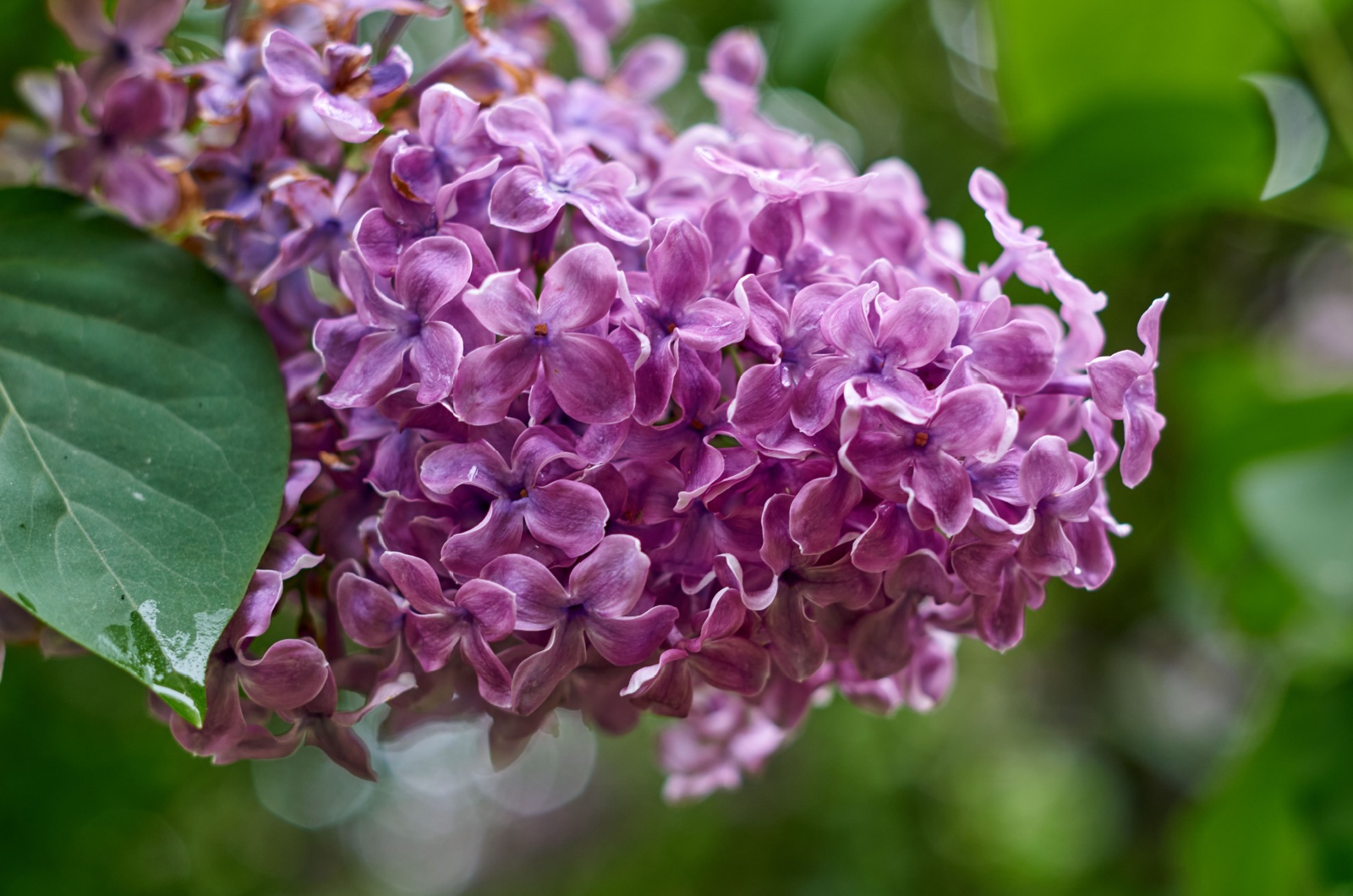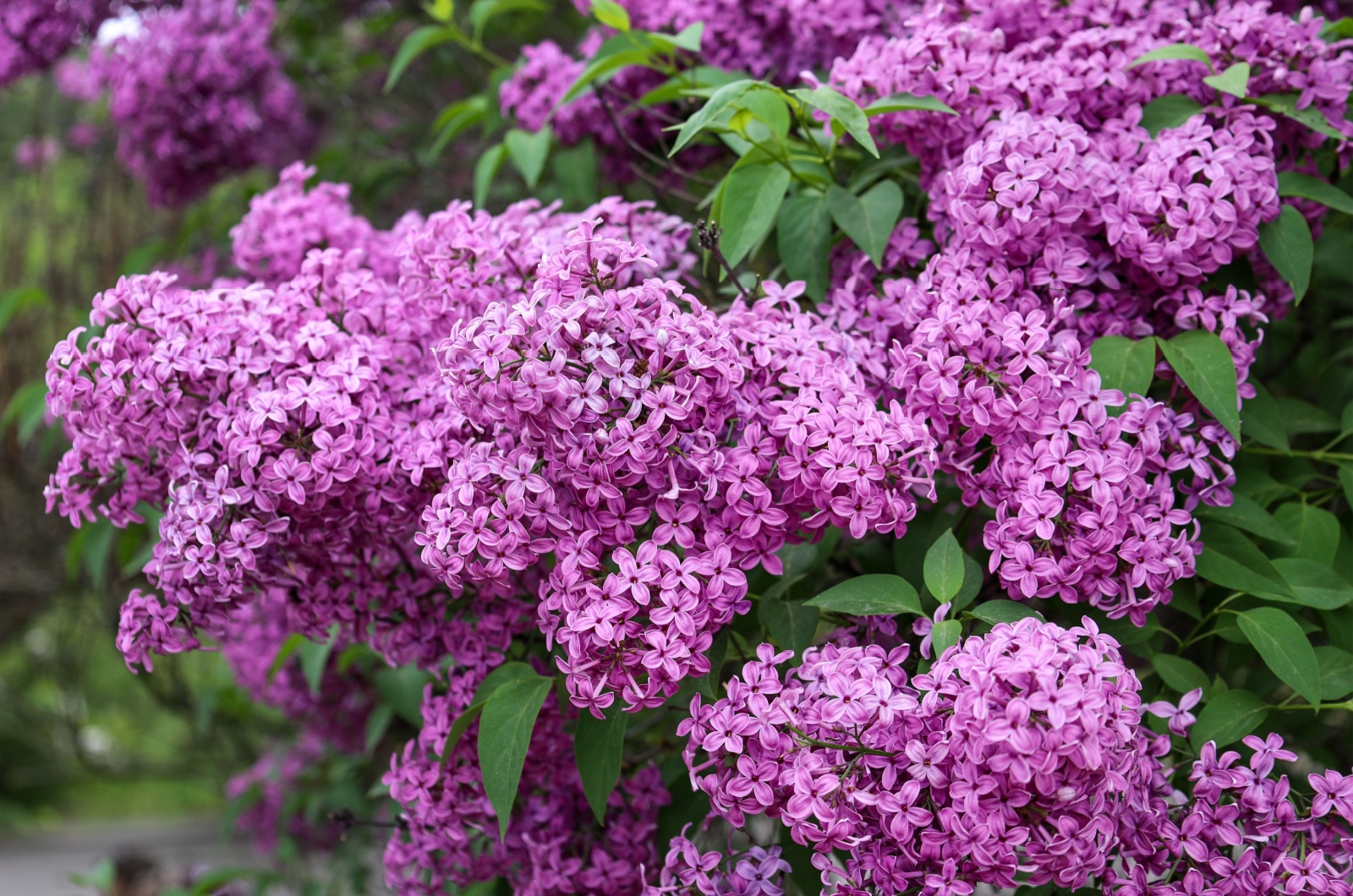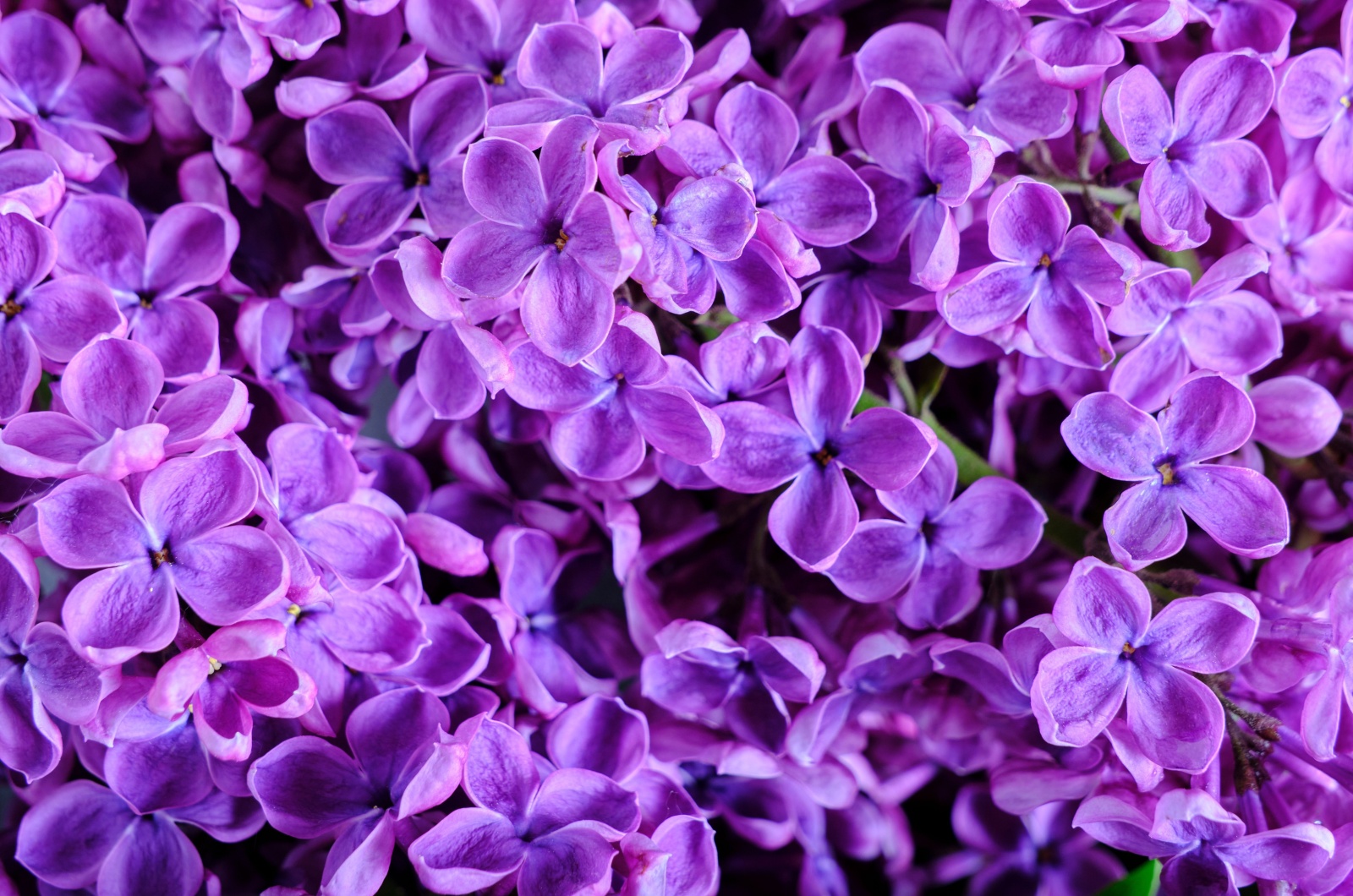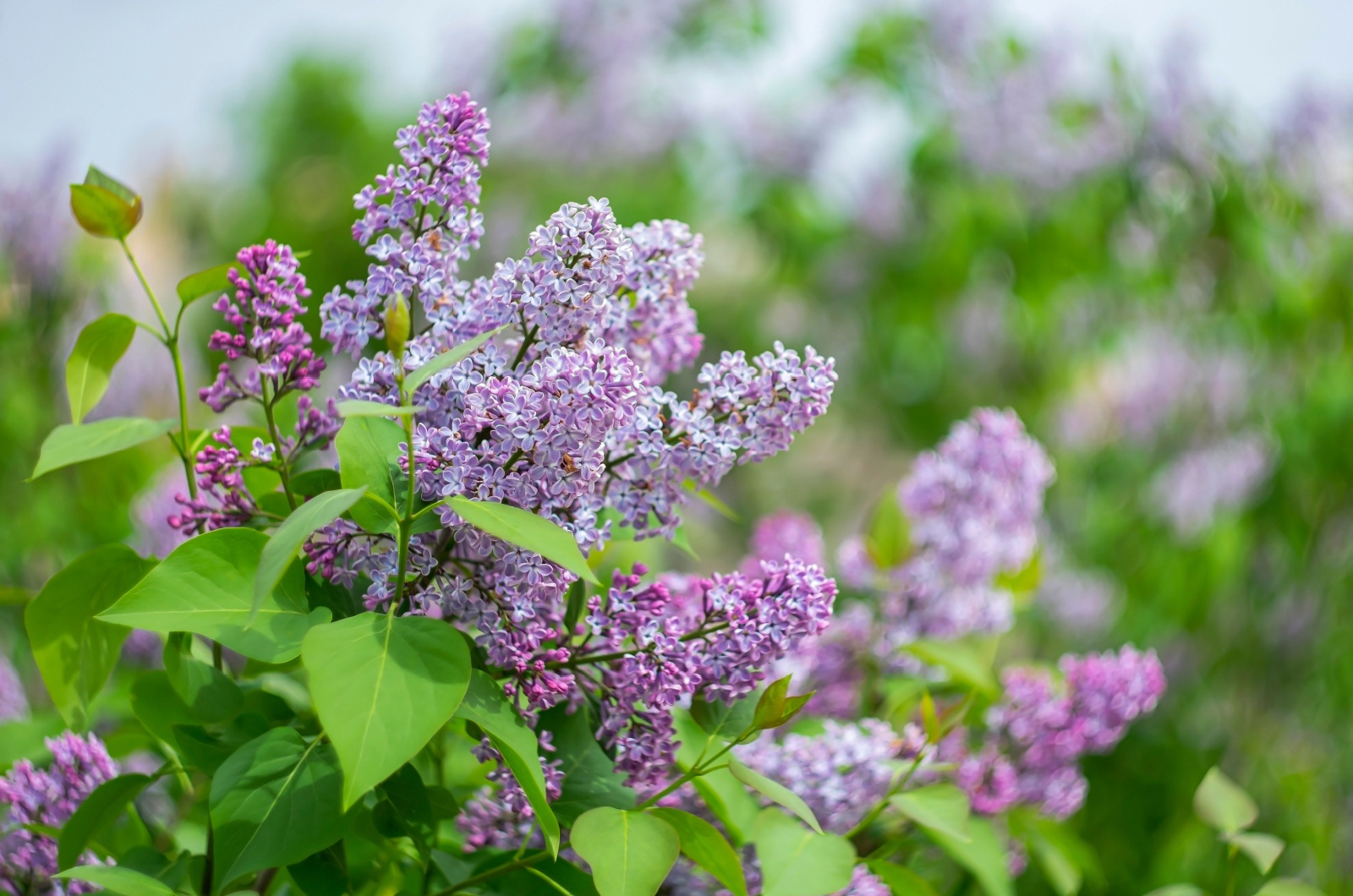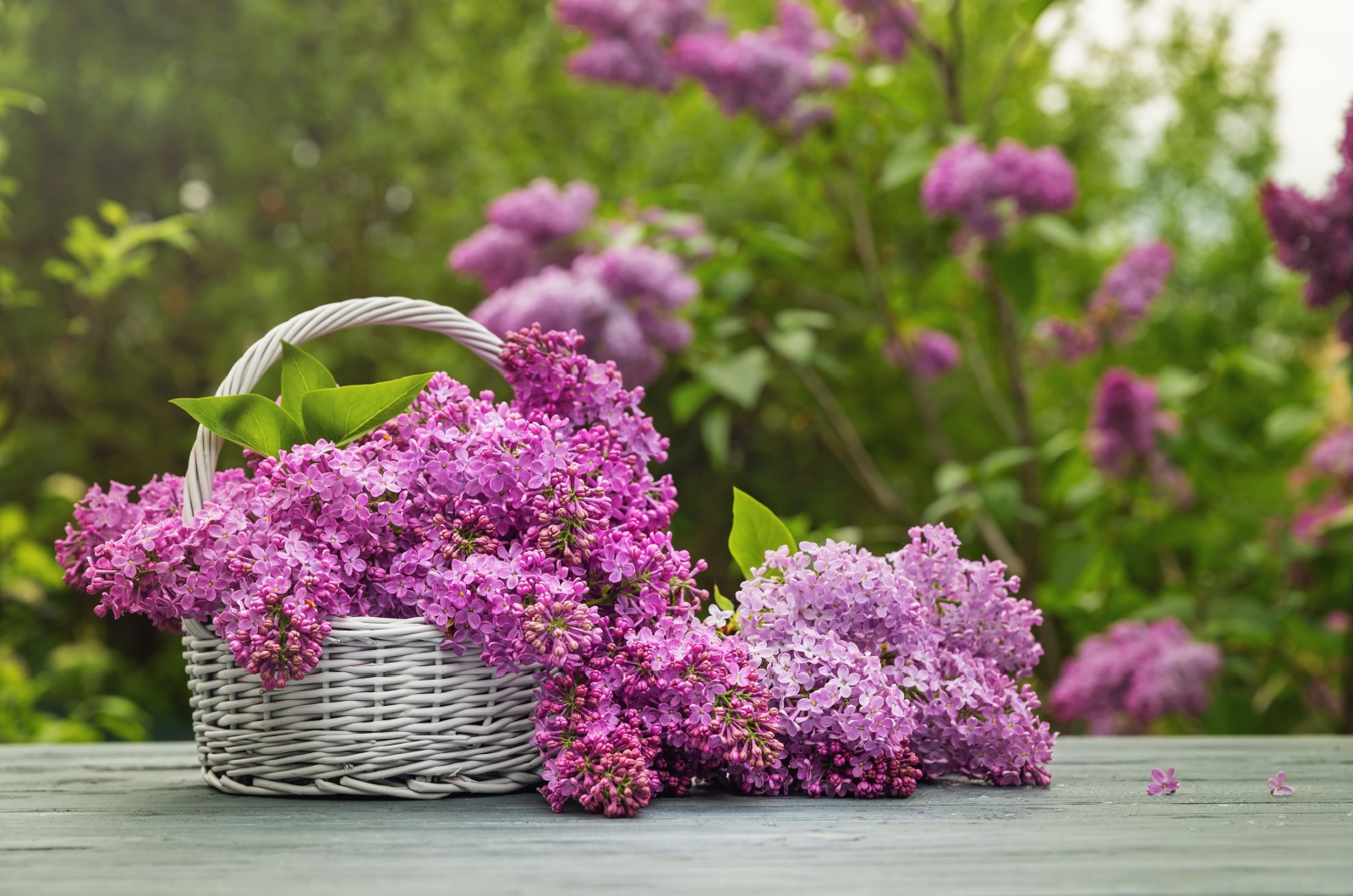Ahh lilacs, the staple flower of many gardens!
Despite their reputation for easy care, there are times when these beloved blooms seem to surprise us (and not in a good way).
Once spring turns to summer, you might find yourself puzzled by the absence of their fragrant blossoms, as if your lilac bushes are playing a game of hide-and-seek and leaving you to wonder where they’ve gone. But, how can you find their hiding spots?
Here’s a clue – it’s not exactly about finding, but rather tricking them into showing themselves!
There are a few secrets tucked up my gardening sleeves that’ll help you entice those elusive lilacs back into full bloom, ready to grace your garden once again.
#1 Your Lilacs Might Be Craving More Sunshine
Noticed your precious blooms losing their luster? Well, it could be a case of too much shade stealing their spotlight!
If nearby trees or hedges have grown, they might be casting too much shade over your lilacs, leaving them feeling a bit shaded during springtime.
But no worries, the answer is right around the corner.
If you can find a sunny spot, preferably one with a southern exposure and a solid six hours of sunlight, you might just see those blossoms burst back into action!
And if moving them isn’t an option, a little tree trimming could be just the ticket to let those rays shine on through.
Also read: Grow Common Lilacs In Colorado This Way And Have A Dazzling Flower Display
#2 Pruning Them Too Early Or Too Late Might Be The Reason
Timing is everything when it comes to giving your lilacs a little trim, and proper pruning protocol is key to keeping these beauties in tip-top shape.
Lilacs are like clockwork, blooming on old wood and sprouting new buds as soon as the spring flower display wraps up.
So, don’t grab those pruning shears just yet, but rather wait two weeks after those last flowers take their final bow.
While you’re at it, give those dead or damaged branches the boot – they’re just hogging the stage anyway!
Remember, lilacs are plants you shouldn’t miss pruning this spring!
#3 Or Perhaps You Didn’t Prune Them At All
I already talked about pruning them too early or too late, but let me ask you this: have you ever pruned your lilacs?
If not, then it’s definitely the time to whip out those pruning shears and give your lilacs the makeover of a lifetime!
Just like a seasoned stylist knows when to trim those dead ends for a fresh new look, you’ll want to target the older wood on your lilac. Start with the interior or exterior canes, giving them a trim down to a manageable two or three feet tall.
Think of it as a lilac spa day, with a little off the top for good measure!
With ample sun exposure and a little patience, your lilac will soon be bursting with blooms once again, ready to steal the show in your garden.
#4 Poor Drainage Leaves Your Lilacs High and Dry
Your lilacs won’t settle down for soggy soil – good drainage isn’t just a luxury for these long-lived shrubs; it’s an absolute necessity.
Without it, their roots might throw a tantrum, leading to rot and stunted growth (not exactly the A-list treatment they deserve!).
If your lilacs seem a bit underwhelmed by their surroundings, it might be time for a relocation to a spot with better drainage. And hey, a little soil enrichment never hurt anyone: sprinkle in some humus and compost to give them that extra boost they need!
#5 Struggling Soil Leads To Struggling Blooms
Lilacs have their preferences and they’re not afraid to show it!
These flowers crave rich, alkaline soil to adequately grow and flaunt those gorgeous blooms. If your lilacs didn’t produce as many flowers this season, then it might be time to check their soil situation.
Keep an eye out for those pesky pine needles and other acidic offenders lurking around because they can throw off the pH balance and dampen your lilacs. But hey, it’s not something a little bit of manure, lime, or some natural wood ash won’t fix.
Give your lilacs the soil they deserve and enjoy an abundance of flowers next year!
Also read: A Complete Guide To Propagating Lilacs
#6 There’s Too Many Suckers On Your Lilacs
Suckers are little troublemakers that can wreak havoc on your lilac’s blooms (it’s like having your friends hog all the snacks – not cool!).
So, it’s time to play lilac detective and track down those sneaky suckers. So, grab your gardening equipment and get ready to do some digging and cutting.
By trimming or removing these suckers every year, you’ll free up valuable resources for your main lilac plant to flourish and bloom to its heart’s content.
And if you’re feeling extra generous, you can even replant those suckers and give them a chance to grow into flowering shrubs of their own (just don’t expect them to blossom overnight).
#7 Weeds And Plants Might Be Stealing Their Nutrients
Picture your majestic lilac, standing tall in your garden, surrounded by unruly grass and pesky weeds. It’s like a battle of greenery (and the only winner should be your magnificent lilacs).
With a trusty pair of gardening gloves and a bit of elbow grease, you can reclaim your lilac’s throne and banish those annoying intruders for good!
Keep your lilac’s base clear, relocate rogue perennials, and fortify defenses with a light layer of mulch – not only will it fend off weeds, but it’ll also preserve precious nutrients and moisture for your majestic shrub to thrive!
Also read: 25 Best Flowers For Early Spring And A Gorgeous Display
#8 Find The Perfect Line Between Feeding And Flooding Your Lilacs
Ah, the age-old debate: to fertilize or not to fertilize our lilacs? Let’s break it down, shall we?
While a little boost of nutrients may help your lilac bloom, too much of a good thing can actually backfire (talk about a blooming disaster!).
Some fertilizers, in their eagerness to impress, can actually stunt your lilac’s blooming potential by causing its leaves to grow bigger instead of focusing on those gorgeous blossoms we all adore!
So, what’s a green-thumb gardener to do?
A sprinkle of balanced 10-10-10 fertilizer in late winter should do the trick, nourishing your lilac just enough to keep it happy and blooming all season long!
But hey, if your lilac seems a bit picky and demands more nutrients, why not indulge its cravings with a hearty serving of aged manure and compost at its base?
Here’s a wild idea: if you’re a die-hard lilac lover who’s been dishing out fertilizer every year, why not give your lilac a break and skip a year? Who knows – it might just reward you with an extra burst of blooms!
Whatever you do, just don’t worry too much about it.
Been there, done that! My own lilacs once faced a bloom drought, but I experimented with a few methods, and voila! Now they’re flourishing.
Here’s a snapshot of my lilacs in full bloom. Once yours start blooming, don’t hesitate to share your pics too! Let’s celebrate those lovely blooms together. 🌸

